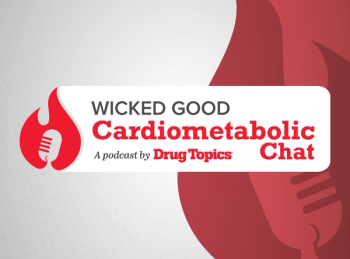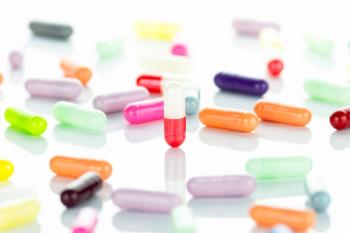
New SSRI approved in last quarter of 2013
FDA approved vortioxetine as oral tablets indicated for the treatment of major depressive disorder.
The psychopharmacology world added a new agent in the final quarter of 2013, vortioxetine (Brintellix, Takeda Pharmaceuticals America, Inc. and Lundbeck A/S). Vortioxetine was approved by the FDA on October 1, 2013 as oral tablets and indicated for the treatment of major depressive disorder (MDD). Vortioxetine carries the standard selective serotonin reuptake inhibitor (SSRI)-class black box warning for the increased risk of suicidal thoughts and behaviors in children, adolescents, and young adults taking antidepressants. Further, vortioxetine has not been evaluated for use in pediatric patients.
Efficacy
Vortioxetine is marketed as a multimodal antidepressant, displaying agonist activity at the serotonin receptor 5HT1A, a partial agonist at 5HT1B, and antagonist activity at 5HT3, 5HT1D, and 5HT7 receptors. While vortioxetine has multiple effects on serotonin neurotransmission, the clinical significance of these effects – outside of serotonin reuptake inhibition – has yet to be fully understood.
Six randomized, double-blind, placebo-controlled studies of short duration (six to eight weeks, including one in the elderly) were done to establish safety and efficacy of vortioxetine. One longer duration study described in the package insert was conducted to demonstrate sustained maintenance therapy effect and safety. Amongst the subgroup analysis by age, gender, or race, there was no clear evidence of differential responsiveness in any of the six short-duration studies. Two studies comparing vortioxetine 5 mg to placebo failed to show effectiveness.
Alzvarez and colleagues conducted one key short duration study (n=429). This four-arm study compared vortioxetine 5 mg/day (V5) to vortioxetine 10 mg/day (V10), placebo, and an active-control of venlafaxine XR 225 mg/day (VXR) in patients with MDD. The primary end point of the Alvarez study was change in the Montgomery-Asberg Depression Rating Scale (MADRS) score, a standard clinical test to demonstrate new chemical entity efficacy. With the MADRS, the lower the score, the better the depression is controlled. The Alvarez study enrolled all patients that met defined criteria with a MADRS score of at least 30, with the average score at baseline in all groups being a score of 34. After 6 weeks of treatment, all three treatment groups had statistically significant improvements in the MADRS score, with MADRS changes of -5.9 for V5, -5.7 for V10, and -6.4 for VXR. Vortioxetine demonstrated statistically significant improvement versus placebo in nine of the 10 categories of the MADRS, with the only exception being failure to show statistically significant improvement in the “concentration difficulties” category.
The one short-term study that focused on the elderly (aged 64-88 years, n=300) meeting diagnostic criteria for recurrent MDD with at least one previous major depressive episode before the age of 60 years without comorbid cognitive impairment (defined as a Mini-Mental State Examination score of <24) received vortioxetine 5 mg versus placebo and showed statistical significance for efficacy of drug over placebo.
Safety
Similar to the other approved antidepressants, vortioxetine has warnings for suicidal thoughts/actions, increased risk of bleeding, serotonin syndrome, activation of mania/hypomania, hyponatremia, and the chance for discontinuation syndrome.
Nausea, vomiting, and constipation are the most commonly reported adverse effects from clinical trial data. Of note, the occurrence of nausea with vortioxetine therapy is as high as 15% to 20% in clinical studies, commonly decreasing to 10% after six to eight weeks of therapy. Vortioxetine is relatively weight neutral, with no weight changes identified at six to eight weeks, and only a 1.1- kg gain seen during the longer duration maintenance study.
Difficulties in sexual desire, sexual performance, and sexual satisfaction often occur as manifestations of psychiatric disorders, but they may also be consequences of pharmacologic treatment. As is summarized in the package insert from pooled data of seven placebo-controlled trials, the incidence of vortioxetine-related sexual dysfunction was 34% in women (20% placebo) and 29% in men (14% placebo); lower doses had lower associations of sexual side effects, vortioxetine 10 mg showed 23% in women and 20% in men versus aforementioned placebo.
Vortioxetine does not appear to have impairments on driving, psychomotor performance, or cognition. Vortioxetine is classified as pregnancy category C.
Dosing
The medication is initiated at 10 mg orally once daily without regard to meals, then increased to 20 mg orally once daily as tolerated. Lower doses of 5 mg once daily may be considered for those who cannot tolerate higher doses, including the elderly. The efficacy and safety of doses above 20 mg/day have not been evaluated.
Vortioxetine primarily undergoes hepatic metabolism by CYP2D6 and is also a major substrate of CYP3A4. Dosing recommendations specific to concomitant administration with CYP2D6 inhibitors (e.g., buproprion, fluoxetine) are to decrease the total daily dose by 50%; conversely, concomitant administration with 2D6 inducers (e.g., carbamazepine, phenytoin) for more than 14 days defined dosing recommendation is to not exceed three times the original dose, and to reduce that dose to the original level within 14 days of discontinuation of the CYP2D6 inducer.
Abrupt discontinuation is not recommended for doses of 15 mg or greater. One week of vortioxetine 10 mg orally once daily should be completed before full discontinuation to limit withdrawal symptoms. Standard MAO inhibitor recommendations exist of 14 days after MAO inhibitor discontinuation and start of vortioxetine, or 21 days between discontinuing vortioxetine and the start of an MAO inhibitor.
No renal dose adjustments are necessary. Mild-to-moderate hepatic impairment requires no dose change; severe hepatic impairment has not been studied with vortioxetine.
Vortioxetine is supplied in 5-, 10-, 15-, and 20-mg strengths in bottles of 30, 90, or 500 count.
References
Brintellix (vortioxetine) product information. Deerfield, IL: H. Lundbeck A/S and Takeda Pharmaceuticals, Inc.; 2013. Accessed December 20, 2013.
Alvarez E, Perez V, Dragheim M, Loft H, Artigas F. A double-blind, randomized, placebo-controlled, active reference study of Lu AA21004 in patients with major depressive disorder. Int J Neuropsychopharmacol. 2012;15:589-600.
Boulenger JP, Loft H, Florea I. A randomized clinical study of Lu AA21004 in the prevention of relapse in patients with major depressive disorder. J Psychopharmacol. 2012;26(11):1408-1416.
Jain R, Mahableshwarkar AR, Jacobsen PL, Chen Y, Thase ME. A randomized, double-blind, placebo-controlled 6-wk trial of the efficacy and tolerability of 5 mg vortioxetine in adults with major depressive disorder. Int J Neuropsychopharmacol. 2013;16:313-321.
Katona C, Hansen T, Olsen CK. A randomized, double-blind, placebo-controlled, duloxetine-referenced, fixed-dose study comparing the efficacy and safety of Lu AA21004 in elderly patients with major depressive disorder. Int Clin Psychopharmacol. 2012;27(4):215-223.
Mahableshwarkar AR, Jacobsen PL, Chen Y. A randomized, double-blind trial of 2.5 mg and 5 mg vortioxetine (Lu AA21004) versus placebo for 8 weeks in adults with major depressive disorder. Curr Med Res Opin. 2013;29(3):217-226.
Kevin W. Chamberlin, PharmD,is assistant clinical professor and assistant department head, pharmacy practice, University of Connecticut School of Pharmacy, Storrs, Conn.
Newsletter
Pharmacy practice is always changing. Stay ahead of the curve with the Drug Topics newsletter and get the latest drug information, industry trends, and patient care tips.






































































































































